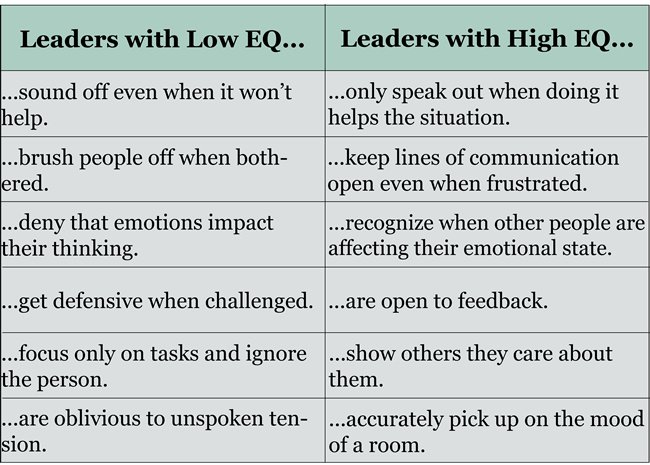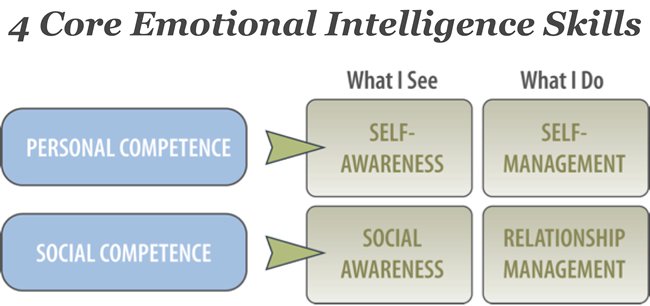When Franklin D. Roosevelt took office in 1933, he recognized that emotional recovery must precede economic recovery. This especially is true for leaders who hope to stay ahead of the pack as the economy bounces back. The further you climb up the corporate ladder and the more people you are responsible for, the more your emotional intelligence skills come into play. A leader’s emotional intelligence (EQ) is so critical that it is responsible for 58% of his or her job performance. Likewise, more than 90% of top performers in leadership positions possess a high degree of EQ.
As a leader, you set the emotional tone for others to follow. Our human brains are hardwired to cue in (both consciously and unconsciously) to the emotional states of other people. As a result, people trust what they see you doing much more than what they hear you saying. In other words, you can’t fake your actions.
The emotional tone that permeates your organization starts with you, and is entirely dependent on your EQ. At this point, you should ask yourself what kind of emotional tone are you setting in your organization and to what degree is this tone influenced by your EQ level. The table provided below lists some typical behaviors observed in leaders in the workplace. This table contrasts behaviors typically noticed in leaders with a high degree of EQ against the alternative typically seen in leaders with a low degree of EQ. Look carefully at the following table and identify which side of the column describes the majority of your behavior.

Measuring Your EQ Is The Critical First Step To Increasing It
In business, you improve what you measure. Hence, everything a company deems important—from revenue streams to operational efficiencies and even Internet bandwidth—has a quantifiable metric tied to it. Measurement transforms abstract ideas into tangible deliverables. The simple act of measuring something sends the message that this “thing” is important to the company’s success and therefore to the success of the individuals working there.
While it is essentially impossible to fake a high EQ, it is certainly possible to improve it. Emotional intelligence—unlike cognitive intelligence or IQ—is a flexible skill that can be enhanced with experience. By testing your emotional intelligence, you take the essential first step toward increasing your EQ, that is, building your self- awareness. Your test results reveal aspects of your behavior that regularly affect other people in ways you could not possibly understand on your own.
TalentSmartEQ’s new best-selling book Emotional Intelligence 2.0 includes online access to the Emotional Intelligence Appraisal®, a test that measures EQ in the following four key areas: self-awareness, self- management, social awareness, and relationship management.

The test results reveal the areas in which your EQ skills are not up to the mark and identify which of the book’s 66 EQ strategies will help improve your skills the most. Further, you can retake the test at a later date, which allows you to measure improvements in your EQ once you have had sufficient time to practice what you have learnt.
ABOUT THE AUTHOR:
Travis Bradberry, Ph.D.
Dr. Travis Bradberry is the award-winning co-author of the #1 bestselling book, Emotional Intelligence 2.0, and the cofounder of TalentSmartEQ, the world’s leading provider of emotional intelligence tests and training, serving more than 75% of Fortune 500 companies. His bestselling books have been translated into 25 languages and are available in more than 150 countries. Dr. Bradberry has written for, or been covered by, Newsweek, BusinessWeek, Fortune, Forbes, Fast Company, Inc., USA Today, The Wall Street Journal, The Washington Post, and The Harvard Business Review.